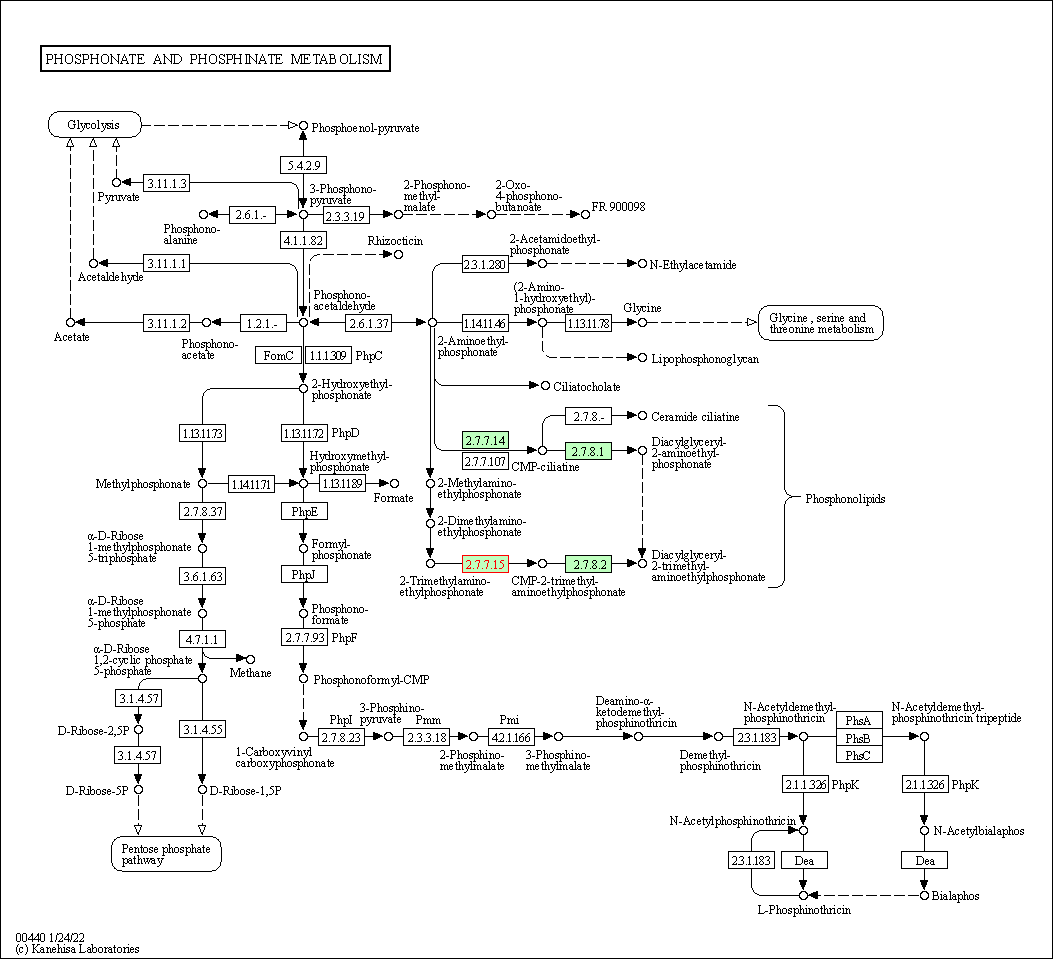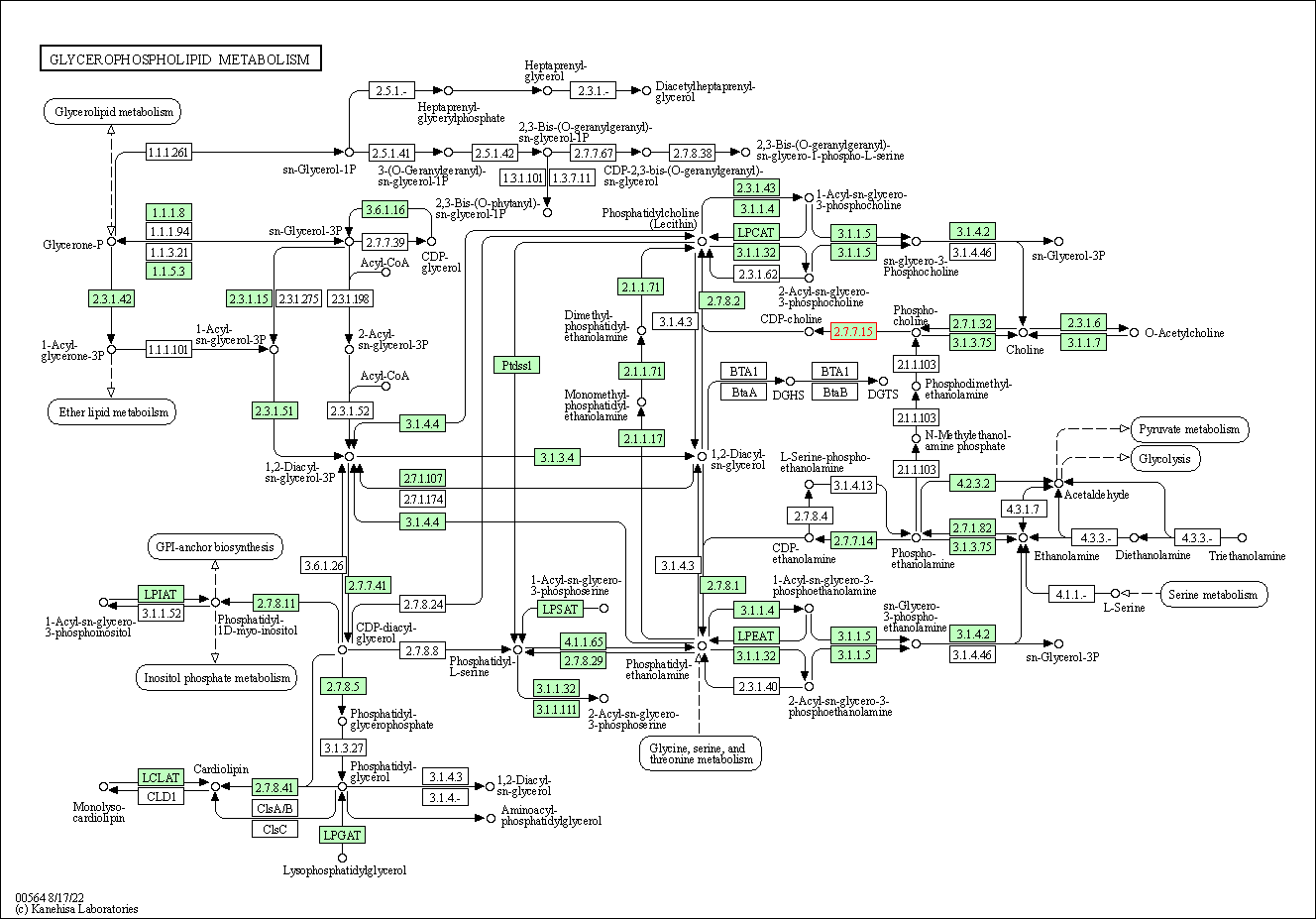Target Information
| Target General Information | Top | |||||
|---|---|---|---|---|---|---|
| Target ID |
T95998
(Former ID: TTDR00172)
|
|||||
| Target Name |
Cholinephosphate cytidylyltransferase (PCYT1B)
|
|||||
| Synonyms |
Phosphorylcholine transferase; PCYT1B; CTP:phosphocholine cytidylyltransferase; CT; CCT
Click to Show/Hide
|
|||||
| Gene Name |
PCYT1B
|
|||||
| Target Type |
Clinical trial target
|
[1] | ||||
| Disease | [+] 1 Target-related Diseases | + | ||||
| 1 | Solid tumour/cancer [ICD-11: 2A00-2F9Z] | |||||
| Function |
Controls phosphatidylcholine synthesis.
Click to Show/Hide
|
|||||
| BioChemical Class |
Nucleotidyltransferase
|
|||||
| UniProt ID | ||||||
| EC Number |
EC 2.7.7.15
|
|||||
| Sequence |
MPVVTTDAESETGIPKSLSNEPPSETMEEIEHTCPQPRLTLTAPAPFADETNCQCQAPHE
KLTIAQARLGTPADRPVRVYADGIFDLFHSGHARALMQAKTLFPNSYLLVGVCSDDLTHK FKGFTVMNEAERYEALRHCRYVDEVIRDAPWTLTPEFLEKHKIDFVAHDDIPYSSAGSDD VYKHIKEAGMFVPTQRTEGISTSDIITRIVRDYDVYARRNLQRGYTAKELNVSFINEKRY RFQNQVDKMKEKVKNVEERSKEFVNRVEEKSHDLIQKWEEKSREFIGNFLELFGPDGAWK QMFQERSSRMLQALSPKQSPVSSPTRSRSPSRSPSPTFSWLPLKTSPPSSPKAASASISS MSEGDEDEK Click to Show/Hide
|
|||||
| 3D Structure | Click to Show 3D Structure of This Target | AlphaFold | ||||
| Drugs and Modes of Action | Top | |||||
|---|---|---|---|---|---|---|
| Clinical Trial Drug(s) | [+] 1 Clinical Trial Drugs | + | ||||
| 1 | CT-2584 | Drug Info | Phase 3 | Solid tumour/cancer | [1] | |
| Mode of Action | [+] 3 Modes of Action | + | ||||
| Modulator | [+] 1 Modulator drugs | + | ||||
| 1 | CT-2584 | Drug Info | [1] | |||
| Inhibitor | [+] 1 Inhibitor drugs | + | ||||
| 1 | Sphingosine | Drug Info | [2] | |||
| Activator | [+] 1 Activator drugs | + | ||||
| 1 | Cholesterol | Drug Info | [3] | |||
| Cell-based Target Expression Variations | Top | |||||
|---|---|---|---|---|---|---|
| Cell-based Target Expression Variations | ||||||
| Different Human System Profiles of Target | Top |
|---|---|
|
Human Similarity Proteins
of target is determined by comparing the sequence similarity of all human proteins with the target based on BLAST. The similarity proteins for a target are defined as the proteins with E-value < 0.005 and outside the protein families of the target.
A target that has fewer human similarity proteins outside its family is commonly regarded to possess a greater capacity to avoid undesired interactions and thus increase the possibility of finding successful drugs
(Brief Bioinform, 21: 649-662, 2020).
Human Pathway Affiliation
of target is determined by the life-essential pathways provided on KEGG database. The target-affiliated pathways were defined based on the following two criteria (a) the pathways of the studied target should be life-essential for both healthy individuals and patients, and (b) the studied target should occupy an upstream position in the pathways and therefore had the ability to regulate biological function.
Targets involved in a fewer pathways have greater likelihood to be successfully developed, while those associated with more human pathways increase the chance of undesirable interferences with other human processes
(Pharmacol Rev, 58: 259-279, 2006).
Biological Network Descriptors
of target is determined based on a human protein-protein interactions (PPI) network consisting of 9,309 proteins and 52,713 PPIs, which were with a high confidence score of ≥ 0.95 collected from STRING database.
The network properties of targets based on protein-protein interactions (PPIs) have been widely adopted for the assessment of target’s druggability. Proteins with high node degree tend to have a high impact on network function through multiple interactions, while proteins with high betweenness centrality are regarded to be central for communication in interaction networks and regulate the flow of signaling information
(Front Pharmacol, 9, 1245, 2018;
Curr Opin Struct Biol. 44:134-142, 2017).
Human Similarity Proteins
Human Pathway Affiliation
Biological Network Descriptors
|
|
|
There is no similarity protein (E value < 0.005) for this target
|


| KEGG Pathway | Pathway ID | Affiliated Target | Pathway Map |
|---|---|---|---|
| Phosphonate and phosphinate metabolism | hsa00440 | Affiliated Target |

|
| Class: Metabolism => Metabolism of other amino acids | Pathway Hierarchy | ||
| Glycerophospholipid metabolism | hsa00564 | Affiliated Target |

|
| Class: Metabolism => Lipid metabolism | Pathway Hierarchy | ||
| Degree | 4 | Degree centrality | 4.30E-04 | Betweenness centrality | 2.66E-06 |
|---|---|---|---|---|---|
| Closeness centrality | 1.32E-01 | Radiality | 1.12E+01 | Clustering coefficient | 0.00E+00 |
| Neighborhood connectivity | 5.25E+00 | Topological coefficient | 4.25E-01 | Eccentricity | 15 |
| Download | Click to Download the Full PPI Network of This Target | ||||
| Drug Property Profile of Target | Top | |
|---|---|---|
| (1) Molecular Weight (mw) based Drug Clustering | (2) Octanol/Water Partition Coefficient (xlogp) based Drug Clustering | |
|
|
||
| (3) Hydrogen Bond Donor Count (hbonddonor) based Drug Clustering | (4) Hydrogen Bond Acceptor Count (hbondacc) based Drug Clustering | |
|
|
||
| (5) Rotatable Bond Count (rotbonds) based Drug Clustering | (6) Topological Polar Surface Area (polararea) based Drug Clustering | |
|
|
||
| "RO5" indicates the cutoff set by lipinski's rule of five; "D123AB" colored in GREEN denotes the no violation of any cutoff in lipinski's rule of five; "D123AB" colored in PURPLE refers to the violation of only one cutoff in lipinski's rule of five; "D123AB" colored in BLACK represents the violation of more than one cutoffs in lipinski's rule of five | ||
| Target Affiliated Biological Pathways | Top | |||||
|---|---|---|---|---|---|---|
| KEGG Pathway | [+] 3 KEGG Pathways | + | ||||
| 1 | Glycerophospholipid metabolism | |||||
| 2 | Metabolic pathways | |||||
| 3 | Choline metabolism in cancer | |||||
| Pathwhiz Pathway | [+] 1 Pathwhiz Pathways | + | ||||
| 1 | Phospholipid Biosynthesis | |||||
| WikiPathways | [+] 2 WikiPathways | + | ||||
| 1 | Acetylcholine Synthesis | |||||
| 2 | Glycerophospholipid biosynthesis | |||||
| References | Top | |||||
|---|---|---|---|---|---|---|
| REF 1 | Pharmacological inhibition of phosphatidylcholine biosynthesis is associated with induction of phosphatidylinositol accumulation and cytolysis of neoplastic cell lines. Cancer Res. 2000 Sep 15;60(18):5204-13. | |||||
| REF 2 | Sphingosine inhibits the activity of rat liver CTP:phosphocholine cytidylyltransferase. J Biol Chem. 1990 Jul 15;265(20):11746-50. | |||||
| REF 3 | Regulation of CTP: phosphocholine cytidylyltransferase activity by the physical properties of lipid membranes: an important role for stored curvature strain energy. Biochemistry. 2001 Sep 4;40(35):10522-31. | |||||
If You Find Any Error in Data or Bug in Web Service, Please Kindly Report It to Dr. Zhou and Dr. Zhang.

